What is Performance Nutrition?
This is exciting news. I teamed up with a highly qualified nutritionist named Jake Gottesman recently. And this week, we released the Performance Nutrition Manual. It’s a complete guide to eating for athletes.
There are naturally going to be questions about the program. So, I wanted to take some time to give you an overview of what’s inside the Performance Nutrition Manual. This way, you can decide if it’s right for you or not.
The Nutrition Expert
In this section, I’m going to share Jake’s credentials. More specifically, I’m going to share what makes him head and heels more qualified than most guys out there. If you want to skip this section, feel free.
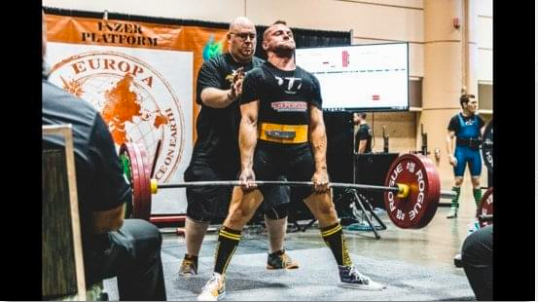
One of the first things that caught my attention on Jake’s resume was his education background.
He has a Masters in Exercise and Nutritional Science from University of Tampa.
For those of you who don’t know, University of Tampa is an extremely prestigious school in regards Exercise and Nutritional science. They run research studies that are used to discover the best methods to increase performance. UT also has a storm of students that go on to consult for the MLB, the NBA, the NFL, and more.
After UT, Jake worked with an MLB Organization. He organized the players’ supplementation, analyzed their physical metrics, and helped with their recovery from workouts, practices, and games.
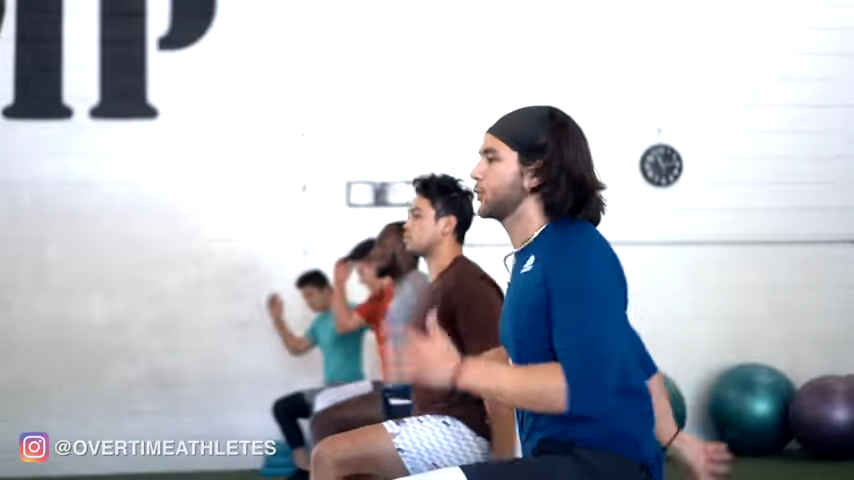
While he was doing that, Jake did nutrition for professional MMA fighters, top Karate athletes, and other athletes.
Jake also used his nutritional wisdom to fuel his body his powerlifting meets. He broke multiple powerlifting records in the State of Florida, and still holds them to this day.
Eventually, he and I teamed up, and I gave him the green light to work with my group of professional baseball players (a group I’m very protective of), football players, and more. And he’s done exceedingly well working with them.
Why Athlete’s Nutritional Needs Are Unique
Many athletes think they can eat like bodybuilders, powerlifters, or regular dieters.
This might work if you’re a one-foot-in, one-foot-out kind of athlete. But, this won’t work for the serious athlete who’s hip-deep in his sport, with multiple games, practices, and training sessions a week.
One reason is, serious athletes have more stress to endure than bodybuilders, powerlifters, and casual exercisers.
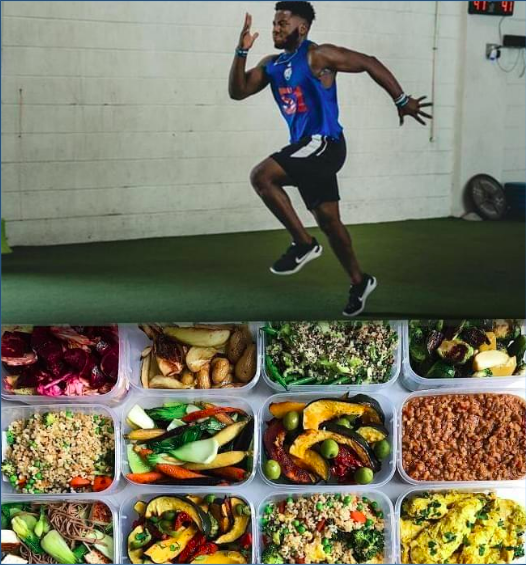
Serious athletes have a long practice
Another reason is that for bodybuilders and powerlifters, lifting is their sport. For athletes, lifting is a tool, their sport is their sport. And their sport has different energetic demands than lifting alone.
This means athletes require different macronutrient ratios, that is, different amounts of fat, carbs, and protein, than lifting athletes.
These are just two reasons in a sea of reasons why athletes can’t eat like powerlifters and bodybuilders.
Sadly, there’s a boatload of nutrition advice for powerlifters and bodybuilders online. And since that’s the only thing athletes can find online, they adhere to this sub-optimal nutritional parameters.
Don’t fall into that trap.
Learn how to eat like an athlete TODAY (introductory discount)
Meal Timing, Frequency, and Macronutrient Ratio
There are three components of nutrition that Jake emphasizes in the Performance Nutrition Manual. They are meal timing, meal frequency, and macronutrient ratio. If you optimize these three components, Jake says you can become the optimal athlete.

For reference, the optimal athlete walks around at about 8-12% body fat. This is enough fat to keep him healthily energized, but not so much that it conceals his muscle mass or abs. Additionally this weight is optimal to avoid injury, to continue to add muscle, and to move at optimal speeds.
Next, let’s go into each component of nutrition to dig a little further into why each one is important for your athletic success.
Meal Timing
Meal timing refers to the time in between meals.
Recently, fasting has been a huge diet fad amongst almost all demographics, however, if you’re an athlete, this would not be optimal for your performance.
The main reason meal timing is so important is muscle protein synthesis. Muscle protein synthesis is the body’s use of protein to build muscle and fuel performance. However, the body can only synthesize a certain amount of protein in an allotted amount of time.
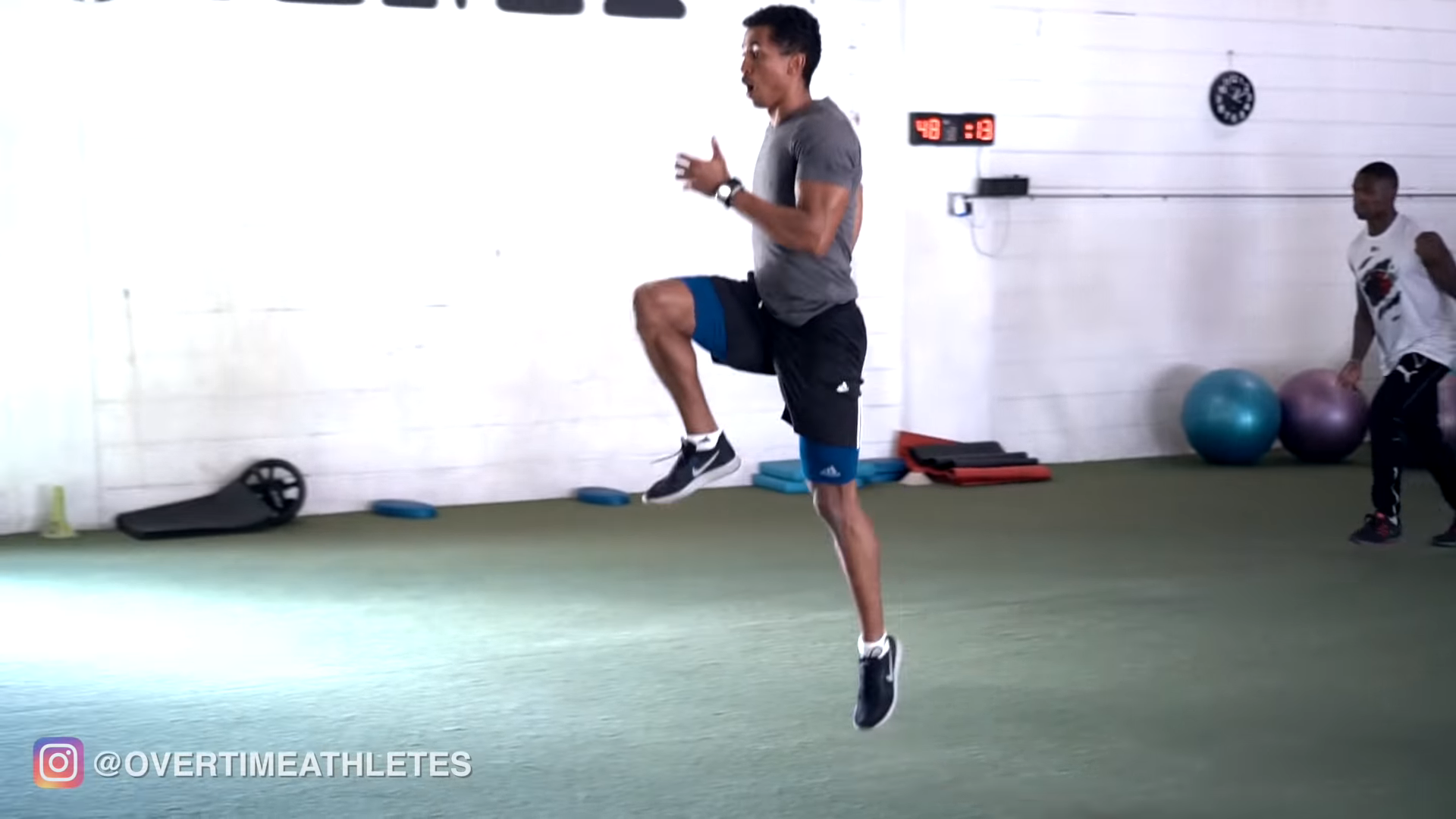
This means any extra protein over the allotted amount will not be used optimally.
So, it’s on the athlete to space out their meals appropriately.
Additionally, you need to be mindful of what you eat before and after games, practices, and workouts. This can make or break you. If you eat a big steak and mashed potatoes before a game, you’ll be on the brink of puking in the first quarter.
On the other hand, if you eat a heavy, fatty meal post workout, it can actually block your protein synthesis.
Jake shares how to maneuver your way through all of these variables in the Performance Nutrition Manual.
Meal Frequency
Let’s jump back into muscle protein synthesis. Again, this is your body using protein to build muscle and perform other tasks that help your performance.
Common sense says you’d like to spike your muscle protein synthesis evenly throughout the day for maximum performance and athletic gains, right? Right.
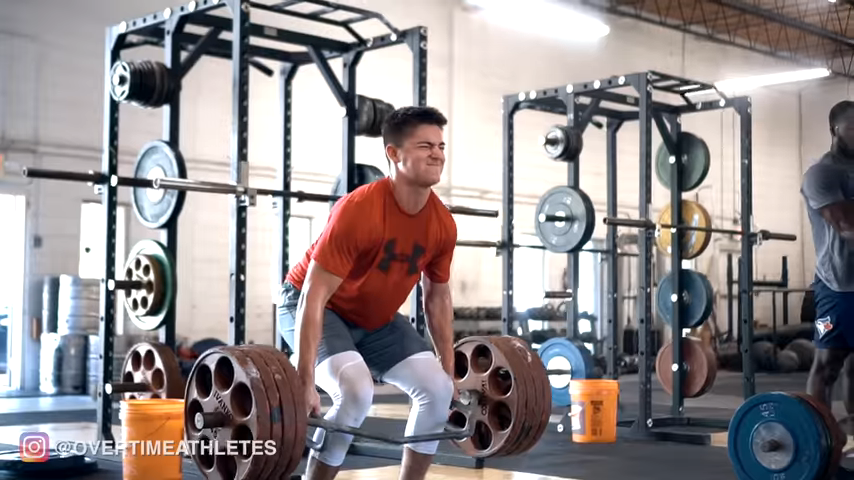
That’s where frequency comes in.
And three meals a day won’t cut it.
As I said above, your body can only digest a certain amount of protein in an allotted amount of time. And if you’re a 180 pound basketball player trying to evenly distribute your protein through three meals, that’s 60 grams a meal, that’s WAY more protein than your body knows what to do with.
You need more meals.
And the specific amount depends on your unique nutritional needs.
Jake reveals how to find your nutritional needs, and your ideal meal frequency in the Manual.
Macronutrient Ratio
We couldn’t have a Performance Nutrition Manual without touching on your macronutrient ratio.
If you don’t know, your macronutrient ratio is the amount of fats, carbohydrates, and proteins that make up your caloric intake.

Jake has found that there’s a particular macronutrient ratio that is optimal for athletes. This macronutrient ratio allows them to shed fat while gaining muscle, supercharge their workouts, keep them energized throughout the day, and more.
While most dieters are cutting carbs and fats, this could be deadly for a serious athlete.
Other Components of the Performance Nutrition Manual
Before I finish my Performance Nutrition Manual Review, I want to share a few other components of the Performance Nutrition Manual, rapid fire style. This way, you’ll know exactly what you’re getting inside the Performance Nutrition Manual:
- A Complete Guide to Eating For Optimal Athletic Performance, and Recovery
- How many meals a day should an athlete eat? Many athletes are eating too few, others are eating too many. Discover the sweet spot inside
- When it’s necessary to lower your protein intake (many athletes don’t know this, and it can lead to inefficient mass gain and lower performance)
- How to calculate how many calories you need to gain weight, lose weight, and maintain weight
- The secrets of cutting weight without jeopardizing strength gains, muscle mass, or performance
- A weird way to lose weight by eating more
- You may be doing heavy damage to your metabolism (this is WAY more common than it should be, and it results in unsightly weight gain and fatigue) Find out what you’re doing wrong, and how to fix it.
- What’s the best amount of time in between meals? Find out inside
- The substance you eat every day that can slow down your workout recovery
- An in-depth look at the body’s energy systems and how you can maximize the utility of each one
- EXACTLY how many grams of carbs, fats, and protein you need to achieve your goals, whether that’s bulking, cutting, or maintaining
- The most common micronutrient deficiencies in athletes and how to fix them (deficiencies in these micronutrients create muscle weakness, fatigue, and lower cognitive function)
- Learn about the most common fad-diets and whether or not they should be followed by athletes
- Did you know that dehydration has a negative impact on muscle contractions? Learn how much water you need to drink throughout the day, and during competition/training to negate these effects
- Why less protein in a meal is better for muscle gain
- Multiple Meal Plans for Training Days and Game Days
- A .39 cent supplement that MULTIPLIES strength and power gains from your training
- The BIGGEST mistakes you can make eating on game day
- How eating candy can significantly BOLSTER your performance in the gym
And there’s a bunch more you can find inside.
Now It’s Up To You
I shared my Performance Nutrition Manual review, now it’s up to you to decide if you’re ready to get a handle on your nutrition and see your athleticism elevate across the board.
To be honest, nutrition can be a headache. Especially when you’re digging through the internet trying to pick up scraps of nutrition information here and there.

The Performance Nutrition Manual gives you everything you need to know about athletic nutrition in one centralized location. It will give you the tools you need to hone in on your unique nutritional demands, so you can see your performance soar.
Important: At the time of me writing this, the Performance Nutrition Manual is available for a one-time introductory discount. This won’t last long. Click the link below to claim it: